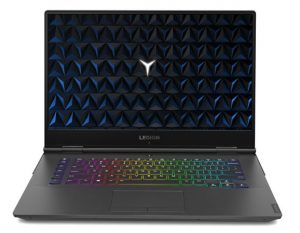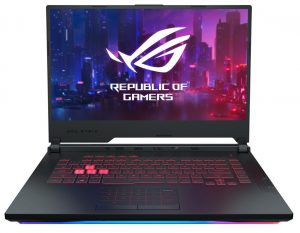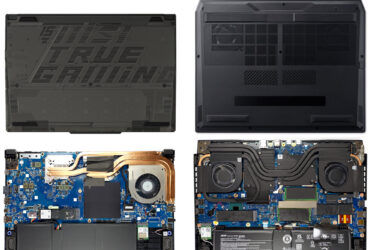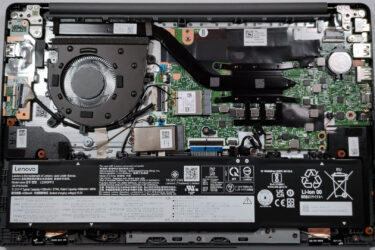NVIDIA GeForce GTX 1660 Ti vs RTX 2060 – pure performance comparison

Today we are looking at two GPUs that are sitting in the opposite spots of the hierarchy of their family. As of now, the GeForce GTX 1660 Ti happens to be the flagship of the GTX 16xx graphics cards, while the RTX 2060 seems to be the underdog in the Ray-tracing enabled GPUs. That’s why we thought it would be a good idea to put it side by side and pick a champion if we are not taking the ray-tracing capabilities in mind (since the RTX 2060 is the obvious winner there).
You can check out our Top Laptop Graphics Ranking to see these two graphics cards and many more.
Specs overview
Spec-wise these two devices are different, yet so alike. They feature the NVIDIA’s N18E-Gx Turing architecture, where the GTX 1660 Ti has an N18E-G0 core, while the RTX 2060 is equipped with an N18E-G1. The main difference between the two is the amount of CUDA cores – 1536 vs 1920 for the GTX 1660 Ti and the RTX 2060, respectively. This means, that the former has a lower TDP – 80W, compared to 90W of the latter. Additionally, the GeForce GTX 1660 Ti works at a base frequency of 1455 MHz and a Boost one of 1590 MHz, whereas the RTX 2060 goes significantly lower – 960-1200 MHz, respectively.
If we consider the memory, both of them feature 6GB of GDDR6 VRAM, built across a 192-bit bus. However, the higher memory frequency of the RTX 2060 results in a significantly higher bandwidth – 336 GB/s vs 288 GB/s.
Benchmarks
In 3 out of 4 synthetic benchmarks, the GTX 1660 Ti scores a better result than its opponent. It is not very big but is still a difference, isn’t it?
Results are from the 3DMark: Time Spy (Graphics) benchmark (higher the score, the better)
Results are from the 3DMark: Fire Strike (Graphics) benchmark (higher the score, the better)
Results are from the Unigine Superposition benchmark (higher the score, the better)
Gaming tests
Moreover, in real life gaming, we saw the margin to drop even further to almost negligible results. However, the win is once again in the hands of GTX 1660 Ti, even by a couple of fps per setting, per game.

| Grand Theft Auto V (GTA 5) | Full HD, High (Check settings) | Full HD, Very High (Check settings) | Full HD, MAX (Check settings) |
|---|---|---|---|
| NVIDIA GeForce GTX 1660 Ti | 127 fps | 72 fps | 47 fps |
| NVIDIA GeForce RTX 2060 | 138 fps | 74 fps | 43 fps |

| Far Cry 5 | Full HD, Normal (Check settings) | Full HD, High (Check settings) | Full HD, Ultra (Check settings) |
|---|---|---|---|
| NVIDIA GeForce GTX 1660 Ti | 101 fps | 94 fps | 88 fps |
| NVIDIA GeForce RTX 2060 | 97 fps | 89 fps | 84 fps |

| Rise of the Tomb Raider (2016) | Full HD, Medium (Check settings) | Full HD, Very High (Check settings) | Full HD, MAX (Check settings) |
|---|---|---|---|
| NVIDIA GeForce GTX 1660 Ti | 125 fps | 66 fps | 44 fps |
| NVIDIA GeForce RTX 2060 | 110 fps | 63 fps | 41 fps |

| Shadow of the Tomb Raider (2018) | Full HD, Medium (Check settings) | Full HD, High (Check settings) | Full HD, Highest (Check settings) |
|---|---|---|---|
| NVIDIA GeForce GTX 1660 Ti | 84 fps | 79 fps | 50 fps |
| NVIDIA GeForce RTX 2060 | 66 fps | 64 fps | 46 fps |

| Tom Clancy’s Ghost Recon Wildlands | Full HD, High (Check settings) | Full HD, Very High (Check settings) | Full HD, Ultra (Check settings) |
|---|---|---|---|
| NVIDIA GeForce GTX 1660 Ti | 81 fps | 72 fps | 47 fps |
| NVIDIA GeForce RTX 2060 | 78 fps | 69 fps | 45 fps |
Conclusion
This battle was fought neck on neck throughout its entirety. However, the NVIDIA GeForce GTX 1660 Ti emerged as a winner with victories in both the synthetic benchmark and gameplay segments. Actually, RTX 2060 was very close to the match its competitor’s results in real life gaming, although it failed to do so by very little.
All laptops equipped with the NVIDIA GeForce GTX 1660 Ti (6GB GDDR6)
All laptops equipped with the NVIDIA GeForce RTX 2060 (6GB GDDR6)














hi, from the Lenovo site ,the Legion Y540 with the 2060 cost 134€ more than the 1660ti, and from what i see the 1660ti is better than the 2060, so i should go with the 1660ti?
Hey, thank you for your comment.
Indeed the GTX 1660 Ti shows a lot of performance for the buck. If you are not planning on playing games with Ray-Tracing enabled, then definitely, the GTX 1660 Ti version is the better choice for you.
Hi, thanks a lot for your job. Its great.
I´ve heard that the 2060 does not go so good with ray-tracing, in fact just from 2070 or above. Been told that, do you agree that the 1060ti is the best choice? Thanks a lot
On the stress test comparison table, the 2060 is referred to as ‘Max-Q’. I understood that the comparisons were done between the 1660 Ti and the Max-Q version of the 2060, is this correct? If so, the non-Max-Q 2060 (which has higher performance) is also commonly found on laptops, and it would be interesting to see a comparison of these cards as well. I agree that the RTX 2060’s – even the non-Max-Q version’s – ray tracing is pretty useless (especially considering the new generation of laptops with 144hz screens), but perhaps it still manages to get better frame rates… Read more »
Hey, Rasim, thank you for your comment. We can confirm that it is the full-fledged “non-Max-Q” version of the RTX 2060. It is just our mistake that the series page shows the Legion Y740 is equipped with a Max-Q version. We are going to address this issue ASAP.
Hello, do you think is that correct to compare different laptop models from different manufacturers? They have at least different cooling system, may have differences in drivers, etc, all that stuff can affect on results, you should compare at least same series laptop from the same manufacturer, if there is any.
Hey guys, I got one question, is the 1660 to overclocked, or just stock for this comparison?